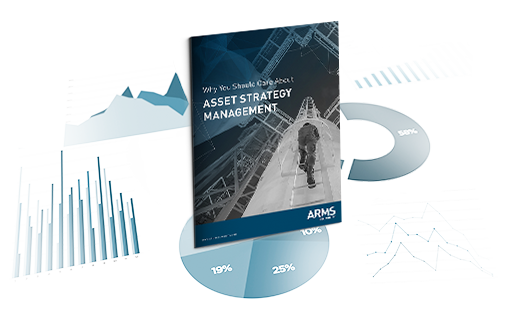A true Asset Strategy Management program delivers predictable outcomes and avoids unexpected failures, outages, safety exposures and costs.
Poor reliability of equipment and processes can have sudden and disastrous effects on the ability of an organization to deliver operational or project objectives. Reliability problems can lead to unexpected downtime, poor quality product or service, missed operational targets, significant remedial costs, poor safety and a rise in incidents.
Managing reliability well seems elusive to most organizations who find it difficult to connect reliability strategy to maintenance execution. In many organizations, the tendency is to focus on maintenance execution alone, in the belief that plant reliability will improve.
In order to improve execution, focus is placed on the work management process, work management KPIs, and Master Data. The reality is that even world class execution of a poor strategy won’t deliver on operational objectives in a predictable consistent way. Many organizations are executing inconsistent or sub optimal strategies, leading to variable results, continued under-performance, and significant failures and outages.
Institutionalizing Asset Strategy Management (ASM) into the operation reduces failures, downtime and risk, and as a consequence, total cost of operations are lower. Deploying the optimal strategy across all assets and monitoring performance provides the means to improve reliability across all assets, and to sustain the improved performance over time, and throughout periods of change.
ASM removes the inconsistent outcomes from asset strategies, allows for any pockets of excellence to be deployed to all relevant assets, and drives continuous reliability improvement.
What’s the roadblock?
Enterprise Resource Planning (ERP) systems are designed to execute strategy, they are not designed to develop, maintain and manage good strategy. Many organizations have not yet realized that strategy is separate to execution. ERP systems are designed to support efficient execution, and in order to be effective, have to be continually populated with appropriate Master Data and optimal strategies.
What’s the solution?
An ASM solution acts as the thread across all systems. It allows organizations to capture and review data from all sources and leverage learnings to enhance reliability strategies by identifying the pockets of strategy excellence and deploying those strategies across the organization wherever they are relevant.
Standardizing and leveraging good strategy
At the core of an ASM solution sits an asset strategy library which houses reliability-based tactics. These asset strategies can be deployed rapidly and support regional or local variations to cater for different operational or environmental conditions. Strategy variation is visible organization-wide via a reporting functionality, where all learnings drive continual improvement in the asset strategy library, which can be accessed and redeployed to any asset.
Achieve better benchmarking
Operation executives are held accountable for performance, but they don’t have access to all of the data and knowledge they need in order to make accurate decisions. In numerous multi-site organizations, reliability strategies are not standardized across all sites, adding to the confusion between data, strategies, and outcomes. These factors make it difficult to benchmark and thus compare costs and performance of like equipment across the organization. An ASM solution captures data from many sources and presents it in one place. It allows managers to set up benchmarks, develop and deploy the best strategies consistently, monitor KPIs and align strategies across their whole operation.
Gain control over execution
Asset Managers often have no control over the deployment and execution of the strategies they develop. An ASM solution gives managers the ability to ensure that standardized procedures for strategies are deployed to all assets, at all sites, and to make certain that any modifications to procedures go through an approval process first. In addition, managers gain the ability to monitor the effectiveness of all strategies and to identify system wide and specific enhancements that should be made.
Future-proofing
When changeover takes place among maintenance, reliability and project engineering personnel, quality and consistency issues can arise. It’s critical that standardization is maintained over the longer term regardless of personnel changes, such that baseline strategies are deployed and monitored according to standards and quality assurance rules. To ensure strategies remain optimum over the asset life, the rationale for each strategy decision is maintained and can be revised, improved or changed as business needs change.
Rapid integration
Time is money. The sooner a reliability strategy can be developed and deployed, the better. An ASM system integrates with an organization's existing ERP system for easy, efficient and rapid deployment.
Case in Point: Major LNG operator develops & deploys strategies in only 44 days
The Goal
- To develop maintenance strategies for a major LNG brownfield operation.
The Situation
- Had no clear method to develop and standardize maintenance strategies in a rapid and efficient manner for all brownfield assets.
- Many existing PMs were outdated.
- Many assets did not have strategies.
How an ASM solution was leveraged
- Generic maintenance strategies were developed for 122 unique equipment types.
- Variations were made on generic strategies where applicable to meet asset operating context.
- Strategies were then uploaded to SAP and deployed to 3,631 assets.
Outcomes
- Client now has a single, standardized database in which strategies can be quickly updated and uploaded to SAP.
- Entire process was completed in 44 days vs. 90+ days if a traditional method had been used.
- Client is going to leverage the strategies and learning from this project to assist with the rollout of an upcoming Greenfield initiative.


